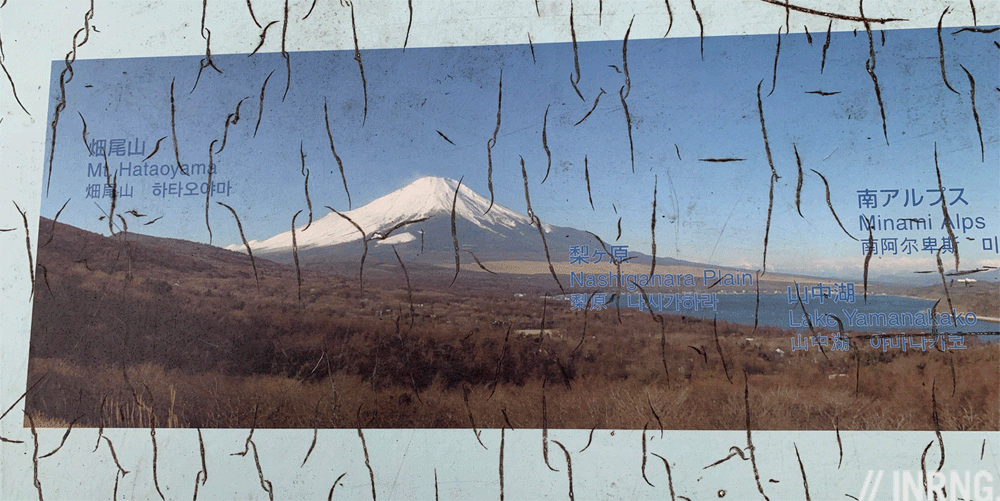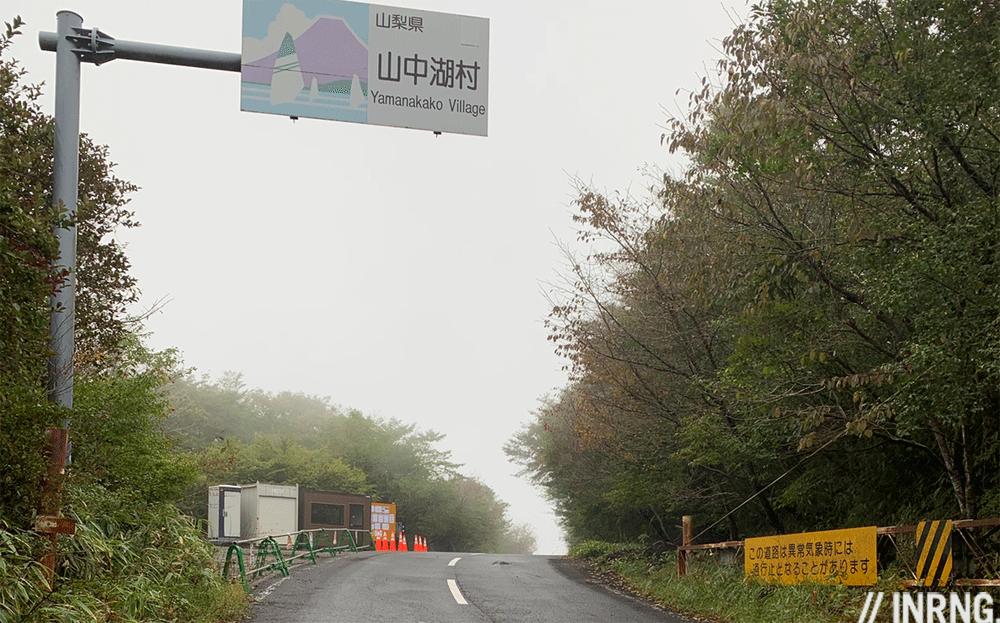Here’s a look at Mikuni pass in Japan. It’s not famous but it should be the decisive climb of the 2020 Olympic road race, if only for the men, so here are some notes in this climb outside Tokyo which offers double-digit gradients and if that doesn’t take your breath away then the views of Mount Fuji will… as long as the weather’s fine.
This is repost from February 2019 in order to take a closer look at hardest climb of men’s Olympic road race
The Route: starting in Oyama in Shizuoka prefecture, the 147 road heads north. It is 6.75km long and climbs 710m, an average gradient of 10.5% to the pass. The descent on the other side is shorter and less steep.

The Feel: it climbs from the start but nothing too savage as you pass farms, these are not the large holdings readers in Europe or the US may know, but small plots of land with neat raised beds of soil where vegetables grow in tidy lines. There are tidy bushes which almost look like decorative gardens butthey’re camellia sinensis whose leaves make the omnipresent green tea, much of which is grown in the area and locals, of course, say Shizuoka tea is the best.
Soon woodland encloses the road and it’s not going to change much, your view is the tarmac and the trees. Signs warn of 12% gradients and sure enough the road pitches up, often you can see 500m ahead to the next bend in the road but progress feels slow, that bend ahead can take two minutes to arrive when the slope is 14-16%. The curves are gentle, think wide corners rather than tight hairpins, the kind you just pedal through rather have to stand on the pedals to attack. Some sections slow you down further as they’re paved with cement cut with narrow grooves, presumably to drain typhoon rain. It levels out before the top and then comes a final kick over the summit just as those five kilometres took a long time, the final ramp is too long for a quick sprint to the sign at the top.
The best part comes once you clear the top when all of a sudden you round a corner and are presented with the vast Mount Fuji, stunning beauty with volcanic menace and here reflected in the waters of Lake Yamanaka. Or that’s the plan, when I visited with a camera it was a cloudy, murky day and if Hokusai had 36 views of Fuji, the roadside observation point offered zero. It was a useful halt to don a rainjacket with only a panoramic table to hint at what might be.

The Verdict: Japan has some amazing mountain roads and this isn’t one. Possibly decisive for the Olympics, certainly selective and it’s a good fitness test, a steady, steep ascent with a double-digit gradients but without great views on the way up nor intimate charm. We often compare climbs and for Europeans Mikuni is more Laffrey than Mortirolo. For the Olympics the difficulty should be compounded by heat and humidity.
Heat: it’s south-facing, often lined by dark stone walls and comes late in the race so even if the event starts in the early morning this could be broiling hot for the Olympics. It’s common for Japan in summer to have temperatures well above 30°C (90°F) which you can get on a hot day in the Tour de France too, the difference in Japan is high humidity which changes everything.
Men only: it’s on the route of the Olympic road race but only for the men. Their event is longer than the women’s race and so a loop including this climb is added. It makes the two courses different. “Should women and men have equal courses?” is a wider question, the distances are different across many races whether Liège-Bastogne-Liège, Strade Bianche or the Worlds. But if the women are going to have a shorter course it’s a pity they miss out on this climb, ideally they’d have started 50km outside of Tokyo avoiding the suburban procession out of the Tama hills. This way the climb would have been a good test late into the race. Only both races have to start in Tokyo for municipal pride and so this loop is cut out from the women’s race.

2020 vision: it’s shaded in red above and will be a decisive climb, at the top there’s 30km to go which is a long way on paper but half of this is a descent where it’s hard to take back time. This climb is the last chance for many in the race to make it selective. It’s steep enough for a lone rider to go clear but likely a group forms and it’ll be tactical, can the best climbers get together over the top and work together to hold off a chasing group. It’s longer and steeper than the Vista Chinese climb in the 2016 Rio Olympics, that was a 12 minute effort in Rio, this is 20 minutes or more and comes after five hours of racing.

What’s in a name: Mi-kuni-yama (三国山) means “three countries mountain” and refers to the mountain whose peak forms the point between three prefectures.
Travel and access: you could do this via a big loop from Tokyo but it will involve a long section through the suburbs, many locals in Tokyo ride a train towards the countryside. Otherwise you could skip the city altogether and enjoy some riding from, say, the spa town of Hakkone or enjoy Suruga bay and the views of Mount Fuji. The choice is yours because the road and rail network is convenient, you can take your bike on a train in Japan just as long as it’s wrapped in a light bag.
See also the Yamabushi pass on the 2020 Olympics courses and more roads to ride at inrng.com/roads


Think it’ll be resurfaced before the Olympics Inner Ring?
No idea how they approach this. You can probably tell the Tour de France route from space given the amount of roads redone just in time for the race. For Tokyo I know they’re thinking of resurfacing parts of the marathon route with a special surface that will be less hot for the runners, and quieter for traffic for years after which shows the resources and intent but maybe not for this one rural road?
“You can probably tell the Tour de France route from space given the amount of roads redone just in time for the race” Is this still true? Oh, how I miss the days it was true for the Giro d’Italia! Before the economic crisis one could pretty much count on it to the extent we’d be scouting new routes and run over some bad pavement and say “The Giro needs to come here” so the road would be repaved. Seems a long, long time ago.
Japan’s mountain roads get resurfaced or patched pretty regularly and overall the road condition is excellent. I believe the concrete sections are usually there for grip in the rain (either raised ridges as above or little donuts). They’re a nuisance to ride over but as they’re not ‘broken’ (like a pothole) then I doubt they’ll be changed.
Didn’t ride this pass but did a lot of riding in Japan. Be *extremely* surprised if they don’t have the road in absolute tip-top condition for the race; Japanese roads are extremely well maintained.
As inrng says, Japan has a lot of wonderful climbs on quiet, well-maintained roads and amazing scenery. But be prepared; they build their roads steeper than Europe; a particular favourite Japanese roadbuilding trick is a 15% section right at the start of many climbs.
“you can take your bike on a train in Japan just as long as it’s wrapped in a light bag.”
Haha! What are their reasons for that?
So it doesn’t get the train dirty
A “rinko” bag seems to be a common accessory for cycling in Japan, it’s a light plastic sack and you can remove the front wheel or both and then travel all over the country, the bag packs up small for the ride. There are so many railway lines it’s a good way to get around.
Mr Ring. Is there nothing you don’t know?
+100 on this. Who else has the knowledge to be quite so erudite and the quiet confidence to bring so little vanity alongside it?
If I spotted Inring on a rival pub quiz team, I would drop back and join the groupetto.
Thank you for these insights.
Always look forward to these events, but whether it’s the UCI Worlds or Olympics it can be hard to recognise riders in national kit. Non-specialist partisan commentators often don’t help either.
Doesn’t look like a climber’s course because of the long run in, but then again, Pogacar doesn’t look like a climber anyhow.
Will the Slovenians get to the line with no sprinters in tow?
Hard to recognise sometimes, but I still love seeing the riders in national kit (whether at the Olympics or at the Worlds). Always a mixture of some lovely kits and some utter stinkers.
“If Hokusai had 36 views of Fuji, the roadside observation point offered zero.”
Vintage Inner Ring.
1 Remco
2 Pogacar
3 Wout
Apparently there’s a rumble strip which plays the Japanese national anthem at the right speed… just not on a bike.
Personally I think it’s pathetic that the IOC didn’t put the women on the same course as the men. There is zero reason why they can’t compete on the same course.